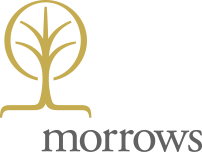Australia is in a fortunate position. The impact of the COVID-19 pandemic has been less than anticipated. We currently have it under control whilst it rages in populous countries overseas. Our economy has rebounded remarkably largely as a result of the ’21 Budget and massive economic stimulus from both Federal and State Governments.
The ’22 Federal Budget delivered on Tuesday, continues the stimulus spending as well as addressing a number of social issues such as better opportunities for women, aged care and employment training. Many commentators distinguish the actions suggesting that the Federal Government is “throwing money at the problems” rather than creating lasting structural reform. As such, many see the Budget as a missed opportunity and question whether our two major parties had swapped jumpers and started kicking goals for the opposition. It certainly had the look of a Labor Budget and an election sweetener.
The real opportunity was to address the “big issues” such as genuine nation building (as opposed to ad hoc infrastructure) and tackling income inequality which in the long term is a recipe for social upheaval such as we see in the USA.
Nonetheless, most of our clients will find some very favourable outcomes – there are few losers perhaps apart from the future generations who will pick up the tab
For an in-depth analysis, the following links provide a clear outline of the budget:
Read the Government budget papers
Keep in mind the following information is General Advice and is obviously not personalised for your unique needs, objectives or financial situation. Please get in touch with your advisor before taking any action on the above/below points so they can advise on the appropriateness of this for you.
Business
Temporary full expensing
The announcement of the extension of the temporary full expensing measure was very much on-theme with the instant asset write-off threshold updates from last year’s Budget, the criteria for which has changed more times than major party leadership. This item is the largest cost to Treasury in this Budget but at least it is more in the timing of tax receipts than absolute.
As it stands, eligible businesses with an aggregated turnover of less than $5 billion can immediately deduct the cost of depreciating assets purchased after 7.30 pm AEDT on 6 October 2020 (first installed or ready for use by 30 June 2022). The proposal in the Budget extends this to assets that are installed or ready for use by 30 June 2023.
Temporary full expensing is likely to be an important vessel towards the recovery of many businesses, however, the liquidity required to indulge in a hefty asset purchase may be in short supply – another COVID-catch-22. Financing could be the answer with interest rates as low as they have ever been – speak to Les Warden from Morrows Lending Solutions (lwarden@morrows.com.au) to find a solution tailored to your business today.
Once again special considerations apply for cars – speak to your Morrows advisor before hitting up the dealership. From 1 July 2023, normal depreciation arrangements will apply.
Carry back losses
Having yet to properly sink our teeth into last year’s Budget announcement for companies to offset tax losses against prior tax profits, the measure has now been extended for an additional year. Tax losses incurred in 2020-2023 (formerly in 2020-2022) can now be offset against tax profits made in years prior to 2023, as far back as 2019. Companies that utilise the measure will receive a tax refund in the loss-making year equating to the amount which has been offset by the losses carried back. Watch out where dividends have been paid in recent years – it is imperative that no franking account deficit arises in carrying back losses.
Tip – this measure couples nicely with the temporary full expensing provisions, the deduction for which may tip companies into a tax loss and indirectly facilitate a cash-discounted asset purchase, as the temporary full expensing provisions invite businesses to invest in capital assets in order to access the tax value of the losses such a purchase may generate.
Powerful but complex – reach out to your tax and business advisor to learn more.
Patent box regime
An ‘out of the box’ idea so to speak – a tax concession encouraging medical and biotechnology innovations has been announced. Piggybacking off the same concept used in other countries (such as the UK and France) the intention is to catalyse the ability of Australian companies to maintain and legitimise intellectual property within Australia.
Despite endeavours taken in recent years (such as R&D tax incentives), the ownership of Australian-generated intellectual property has historically and commonly moved offshore. The regime intends to preserve these innovations within Australia by offering a corporate tax rate of 17% (rather than the 2022 standard corporate tax rate of 30% or 25% for eligible SMEs) applied to income directly ascertained from Australian-owned and generated patents. This will apply from 1 July 2022 to granted patents that were applied for after the Budget announcement.
While many have speculated that this advance is the missing ingredient in the incentive regime, it is unfortunate in the grander sense that the same concession will not be granted to other deserving industries such as IT, renewable technologies and manufacturing.
Apprenticeships & cadetships
The Boosting Apprenticeship Commencements program will be itself boosted by an additional $2.7 billion in order to extend and further support more than 170,000 new apprentices and trainees. Under the program, businesses will receive a 50% wage subsidy over 12 months with a cap of $7,000 per quarter per trainee. The deadline to sign up all your new trainees is 31 March 2022, so there’s still time to put an ad in the local paper. The government has also promised to deliver pathway services for 5,000 women into ‘non-traditional’ apprenticeships (whatever that means). One can only hope that the businesses training up all these new apprentices – both female and male – feel that the value of a newly-trained employee after 12 months is enough to continue employing them and begin paying their full wage without government assistance.
Furthermore, the government is investing $10.7 million to support cadetships in digital careers in an attempt to polish up the digital skills of Australians in a timely and flexible way, with on-the-job training to boot.
It is also important to note that the government is eternally optimistic about its impact on employment numbers. A case in point – the JobMaker program, which has been continued from last year. This was spruiked the last budget as being support that would create 450,000 new jobs for young Australians, however, the estimate has now been quietly revised to 10,000 jobs. The hope for 170,000 new apprentices in the workforce by April 2022 is not guaranteed either but must be pushed hard.
Individuals
Deductions and offsets
The government’s low and middle-income tax offset (LMITO) has been extended in this year’s Budget in an attempt to support household income and create more jobs – an echo from last year’s Budget. The maximum offset of $1,080 is at its sweet spot for those earning between $48k and $90k, with a smaller portion accessible to those earning as little as $37k and as much as $126k, as set out in the following table:
| Wage | Offset |
| $37k or less | $225 |
| $37k to $48k | $255 plus 7.5c for every dollar above $37k up to a maximum of $1,080 |
| $48k to $90k | $1,080 |
| $90k to $123k | $1,080 minus 3c for every dollar of the amount above $90k |
The idea is that the increase in disposable income will trickle down and in turn increase economic stimulus and job growth (a somewhat quaint notion with Australia’s economy still licking its wounds); it may be hard to determine to what point the LMITO will directly translate into economic growth.
Another way individuals who “have a go” will “get a go” is through self-education expense claims. The government has announced they will be removing the requirement to exclude the first $250 spent on self-education – allowing newly educated taxpayers to claim the full cost of their knowledge.
Both of these seem “small beers”.
Employee share scheme
Deferring tax on an employee share scheme is a neat little trick for taxpayers, as it allows them to plan and prepare to pay tax at a later date on the shares they have received. Out of sight, out of mind…that is until they cease employment with the company, at which time all their deferred tax immediately catches up with them as they’re looking to start afresh – not the best parting gift to be met with.
This however is set to change, with the government announcing that of the four current taxing points, cessation of employment shall now be crossed off the list – bringing Australia more closely in line with international standards.
Not quite satisfied? The government has also announced that they will be cutting some red tape to make it easier for companies to offer ESS to employees by removing some tedious disclosure requirements – and increasing the value of the shares that can be issued from $5k to $30k per employee per year.
First Home Buyers
A few wins for the prospective home buyers came to light with this year’s Budget…
The First Home Buyer’s Scheme (whereby buyers only need a 5% deposit) has been expanded to include another 10,000 places (and single parents may only need a 2% deposit). As the government is acting as guarantor for the shortfall, buyers will avoid paying the lender’s mortgage insurance and will be able to reach that milestone more quickly to secure a slot in the property market.
The First Home Super Save Scheme will enable first-time buyers to access as much as $50k from super to purchase a home (up from $30k) beginning from 1 July 2022.
Looks like we can continue to recklessly invest in brunching on smashed avo after all!
Superannuation
60 is the new 65 when it comes to downsizer contributions. Pony up!
Eligible individuals can now make a one-off, post-tax contribution to their superannuation of up to $300,000 per person from the proceeds of selling their home from the age of 60 rather than 65. Time to sell (especially with the property market this lucrative) and buy that campervan (or just a downsized home) before the bells and whistles of old age kick in – or the next lockdown-inducing global pandemic.
Loosening the tie on work test requirements for voluntary super contributions
No time for work during retirement? No problem. Individuals between 67 and 74 years of age can now make or receive from their spouse non-deductible, non-concessional contributions without needing to meet the work test (working at least 40 hours over a 30-day period in the relevant income year). However, these individuals will still need to meet the work test to make personal deductible contributions – don’t hang up the business formal just yet if you’re still raking in the dough.
$450 superannuation guarantee charge threshold no more
Arguably the Budget’s black sheep, the current $450 per month minimum income threshold (under which employees do not have to be paid the superannuation guarantee by their employer) will be removed. This means that all employees will now need to be paid super regardless of how little they earn or how casual their working capacity may be – think twice about hiring your twelve nieces and nephews to help out sporadically between uni hours and naps. On the subject of young’uns, there have been no changes to the under 18s rules – employers are still not required to pay super to employees under 18 unless they work more than 30 hours per week. From the perspective of the employees receiving super for the first time, those who earn under $37k will be eligible for the Low Income Super Tax Offset (15% of their concessional super contributions received), which will be paid directly into their superfund. Overall the strategy has some positive equity nuances but may lead to increased administration and more small balance member accounts – watch this space.
Image source: Shutterstock (1781169863)





